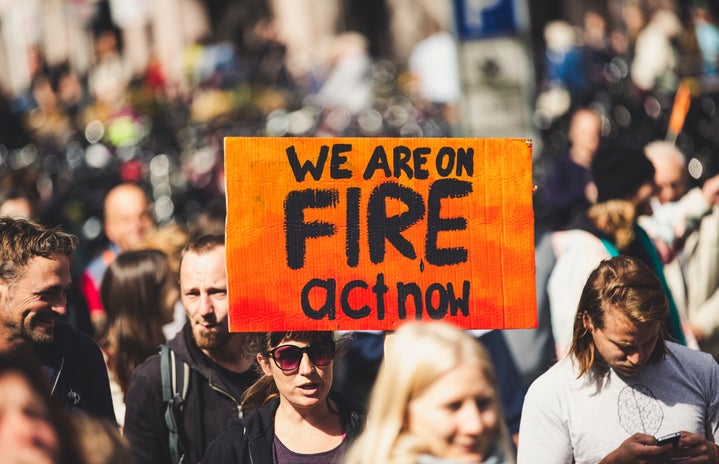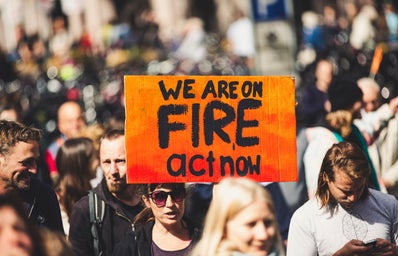Welcome back to the series Living that Green Life!
To start, you’ll need to understand why many people choose to go green, or as green as possible, in their daily lives. Yes, it is about helping the planet and keeping trash out of our rivers and surrounding ecosystem, but it’s also more than that. Instead, it’s focused on our planet as a whole, and the ever-growing impact of climate change on every living creature on Earth. There are a lot of misconceptions about climate change, and from that comes a lot of misunderstanding about the current state of the Earth. Here, we’ll discuss the facts we know and how they impact us, as well as help you make sense of the complicated scientific definitions regarding climate change.
With that being said, climate change refers to significant changes in global temperature, precipitation, wind patterns and other measures of climate that occur over several decades. Another very common misconception is understanding the difference between weather and climate. Yes, they are two different concepts in climate science. Weather is measured over a short period of time in a smaller radius while climate is weather measured over a much longer period of time in a larger radius. So when you hear people say, “How can climate change be real if we just had one of the worst winters in the Midwest?” make sure you inform them that the weather was bad for a month, but the Earth’s climate is still changing and has heated 1.9ºF since 1980.
In the last article, we discussed the many factors affecting climate change, one of the most important factors contributing to this is the increase in greenhouse gases with the top four including water vapor, carbon dioxide, methane and nitrous oxide. Greenhouse gases play an important role in the greenhouse effect. The greenhouse effect is where the sun’s shortwave, visible light radiation, is either reflected away from the Earth or absorbed by the Earth. Whenever the Earth’s longwave, infrared radiation is radiated out to space some of it makes it out but also gets trapped in the atmosphere by greenhouse gases. And where do a majority of these greenhouse gases come from you ask? The burning of fossil fuels. This also happens to be one of the biggest debates going on right now among big companies and universities who don’t want to pull out of coal power because it is so profitable and cheap, even though the alternative of renewable resources are much better for the Earth.
The Earth is warming. In fact, this past February was ranked the fifth hottest February in 140 years. In December of 2018, the Fourth National Climate Assessment was released in a report that summarizes findings from the past four years including chapters of summary findings, national topics, regions in the United States, responses and also a helpful section of FAQs. The most current assessment is 1,656 pages in length and can be found here. It was from this report as well as the IPCC report where it stated that we need to keep below a 1.5ºC warming or the impacts will be more severe than what we are already seeing today: rising sea levels due to melting of the poles and ice shelves, worsening weather patterns, CO2 levels rising in the atmosphere, oceans acidification, increased species extinction, length of spring and fall are shorter and the list goes on.
Another thing to note is that by 2050, the human population would have reached nine billion people and we have to be able to feed these nine billion individuals. While we are able to produce enough food for this population growth, a bigger issue is maintaining and distributing it properly. An important factor in this is the increasing food waste in developed countries such as the United States. There are approximately seven and a half billion people on Earth currently and there are still several impoverished developing countries without easy access to food and clean water, so how are we going to successfully feed nine billion people in 2050? The agriculture component of climate change is a very important one in that with a changing climate, the areas in which we grow our crops will also change. In fact, some agricultural items such as the coffee bean are at risk of extinction due to climate change. Imagine living in a world without coffee.
A big “umbrella” topic in combating climate change among other things is sustainability. Sustainable development goals created by the UN in 2015 can be found here, and countries a part of the UN are expected to accomplish these by the year 2030. Sustainability can be defined in so many ways but it is essentially providing for quality of life on the planet without going beyond the means of the planet itself–not taking, using, or consuming things you can’t replace.
Thinking about the current state of our Earth is rightfully daunting. At this point, the Earth has already warmed by an alarming amount and shows no signs of slowing down as large corporations value money over future generations. Climate change is not simple and complicated, but hopefully, this has simplified it for you. Knowing and being conscious of it is the first step. And remember, you’re not just working to save your future, but the futures of your children and your children’s children.




